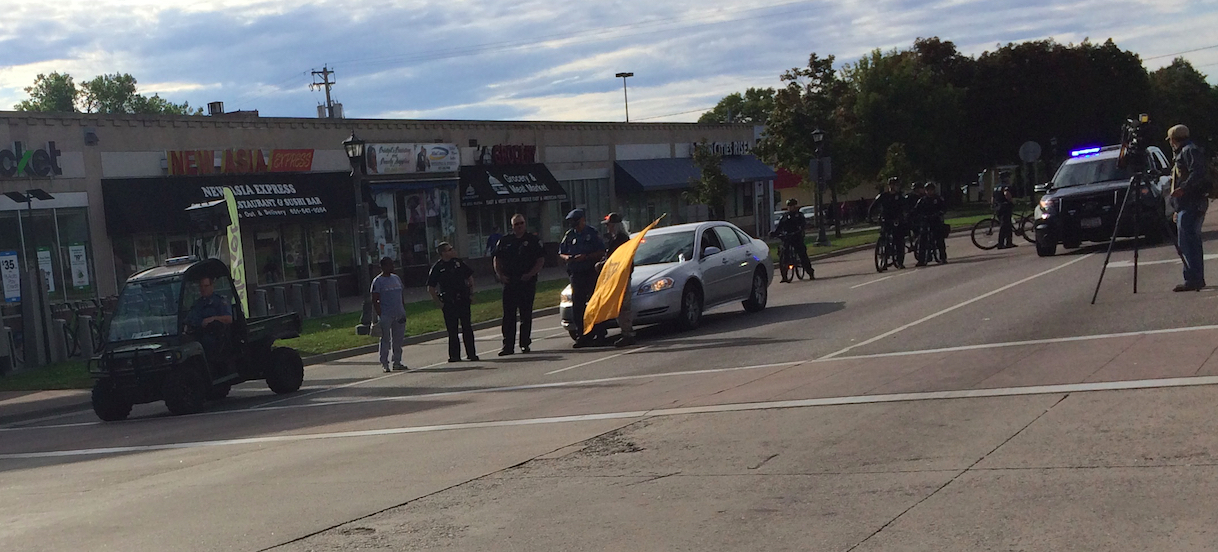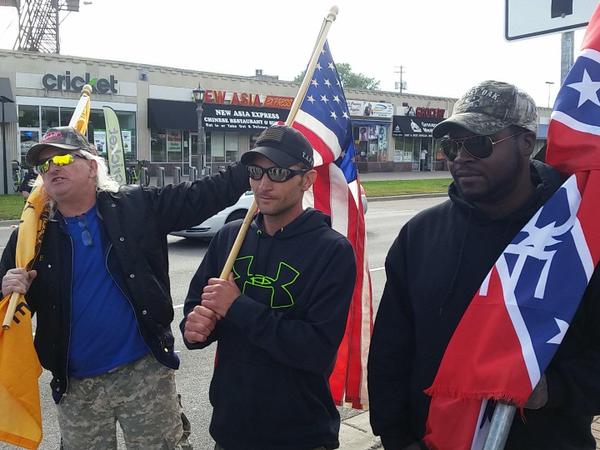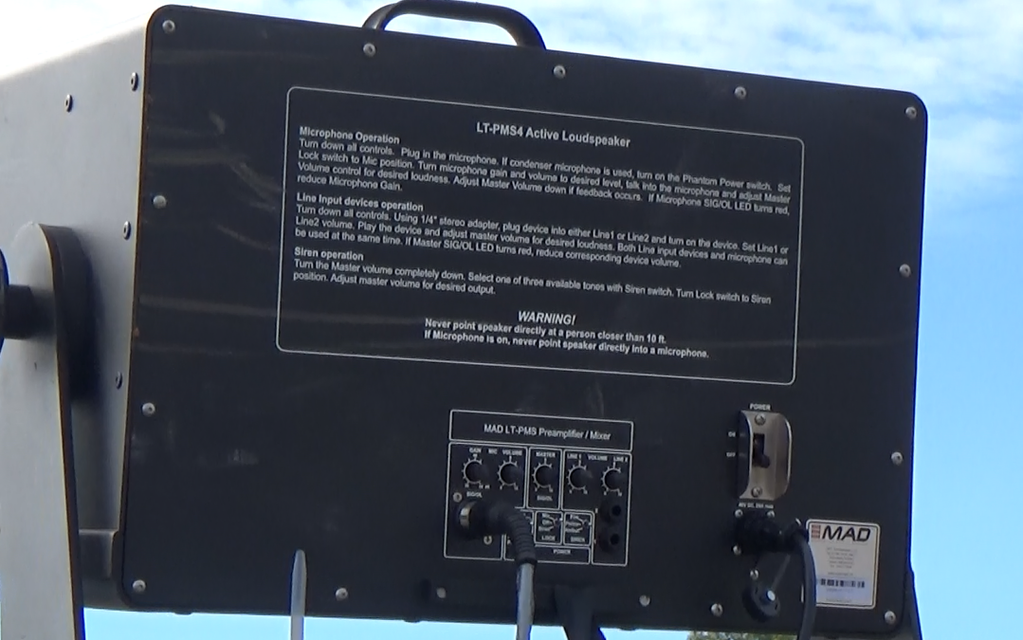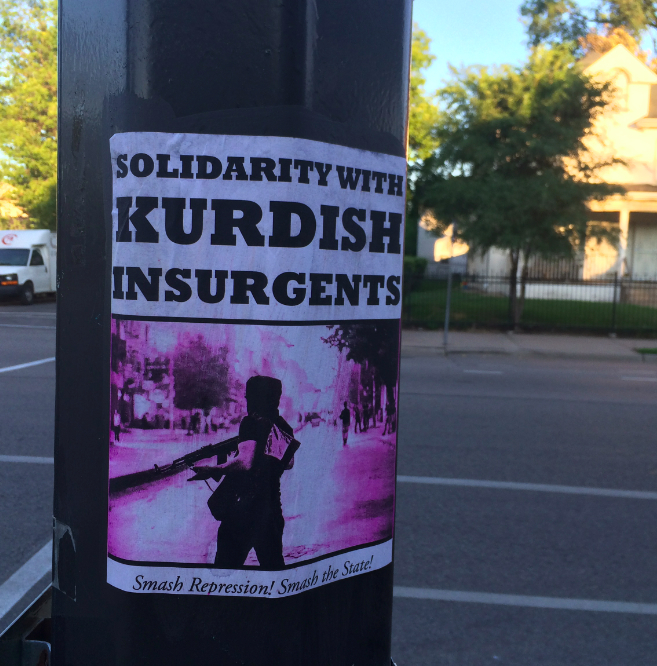Anonymous submission to Conflict Minnesota
 Twice this summer, the Metro Transit Police Department has come under fire (figuratively) for so-called excessive force. The latest incident involves a black teenager with autism being given multiple seizures by cops. On the morning of Sunday the 20th, dozens gathered to protest this act of police brutality by shutting down the light rail. The shut down—timed to interrupt people traveling to the opening game of the Vikings—is the latest in a series of seemingly militant actions to emerge from the Twin Cities-area Black Lives Matter movement. Yet, like the rest, ended up being more media spectacle than substantive action.
Twice this summer, the Metro Transit Police Department has come under fire (figuratively) for so-called excessive force. The latest incident involves a black teenager with autism being given multiple seizures by cops. On the morning of Sunday the 20th, dozens gathered to protest this act of police brutality by shutting down the light rail. The shut down—timed to interrupt people traveling to the opening game of the Vikings—is the latest in a series of seemingly militant actions to emerge from the Twin Cities-area Black Lives Matter movement. Yet, like the rest, ended up being more media spectacle than substantive action.


The march route, from Lexington Parkway to the St. Paul Police Western District building and back, had been pre-disclosed to the police in order to ensure, supposedly, people’s safety. This is quite similar to another action earlier this month aimed at disrupting the Minnesota State Fair:
City officials said at a news conference Friday that an “open line” of communication is in place between police and protest organizers and that they shared an expectation that the demonstration would unfold safely, leaving no reason for the public to stay away” (Corporate news)
It certainly begs the question why no one should stay away if the purpose is to disrupt the fair, but we know better than that. The purpose is to draw attention to their issues, and their organizations. Under the veil of militant disruption, often said to be “hitting them where it hurts,” these groups obtain their desired media coverage without any actual hindrance to the system’s functioning. As the corporate media summarizes:
Metro Transit replaced the shut down light rail lines with buses between [the affected] stations. Staff from Metro Transit were on hand to direct customers.
“It is very similar to what would take place during a mechanical failure that might cause a delay, a car stuck on our tracks or some other disruption,” said Metro Transit spokesperson Howie Padilla.

Organizers also attempted to prevent conflict between the crowd and a handful of white supremacists—politely called Three Percenters—that seemed very upset about missing the Vikings game. While one of their flags did end up disappearing, the tactics of the organizers succeeded in disempowering people from being able to concisely handle them. These tactics included the verbal berating of those who moved to confront them, and in some cases using their bodies to physically protect the white supremacists when people got too close. This is likely not because they cared for the well-being of racists, but because an escalating situation means that they lose control of it. The more peaceful and passive people are, the more the organizers maintain control, and by extension, so do the police.

This model; a model of demands, media coverage, raising consciousness, and making them listen to us, is presented as our only option. It has practically monopolized the entire local terrain of struggle. The following text is from a flyer distributed along the march (adapted from It’s Going Down) that so succinctly clarifies the flaws in this model of protest:
IF I DIE IN POLICE CUSTODY BURN EVERYTHING DOWN
Since the uprising in Ferguson, everything has both changed and remained the same. While activists praise their efforts to change the conversation and perhaps achieve the implementation of certain reforms—body cameras come to mind—the functioning of white supremacy continues on, unrelenting. Over 1,100 people have been killed by police in the United States since Mike Brown.
After the rebellions that erupted in Ferguson, and then in Baltimore, the non-profits and their bureaucrats have been forced to adapt to the changing climate of militancy in the streets. For them, however, revolt becomes a means of winning the same useless reforms as before. Indict the killer cop, or else. Pass this civil rights law, or else. But we see a world beyond that. There is nothing those in power can offer us that will truly solve our problems, and every demand only reinforces their control.
When people revolt in the streets, they are directly attacking what brings misery to their lives: the police that harass, arrest, and in all likelihood will shoot them, the businesses that force them to work to survive under capitalism. They block highways, trains, and streets; the material systems that facilitate the domination of our lives.
We don’t do this to force the hand of our oppressors, we do this to find an escape from oppression entirely. But we must learn to sustain ourselves without relying on the very systems we attack. Across the world, people have liberated space, such as houses, gardens, squares or entire territories. In the squats of Athens and the fields of the ZAD, in Tahrir Square and the Mi’kmaq Blockade, rebels are finding ways to build a life worth living.
“Wherever the economy functions, it is impossible for us to determine our lives for ourselves.







